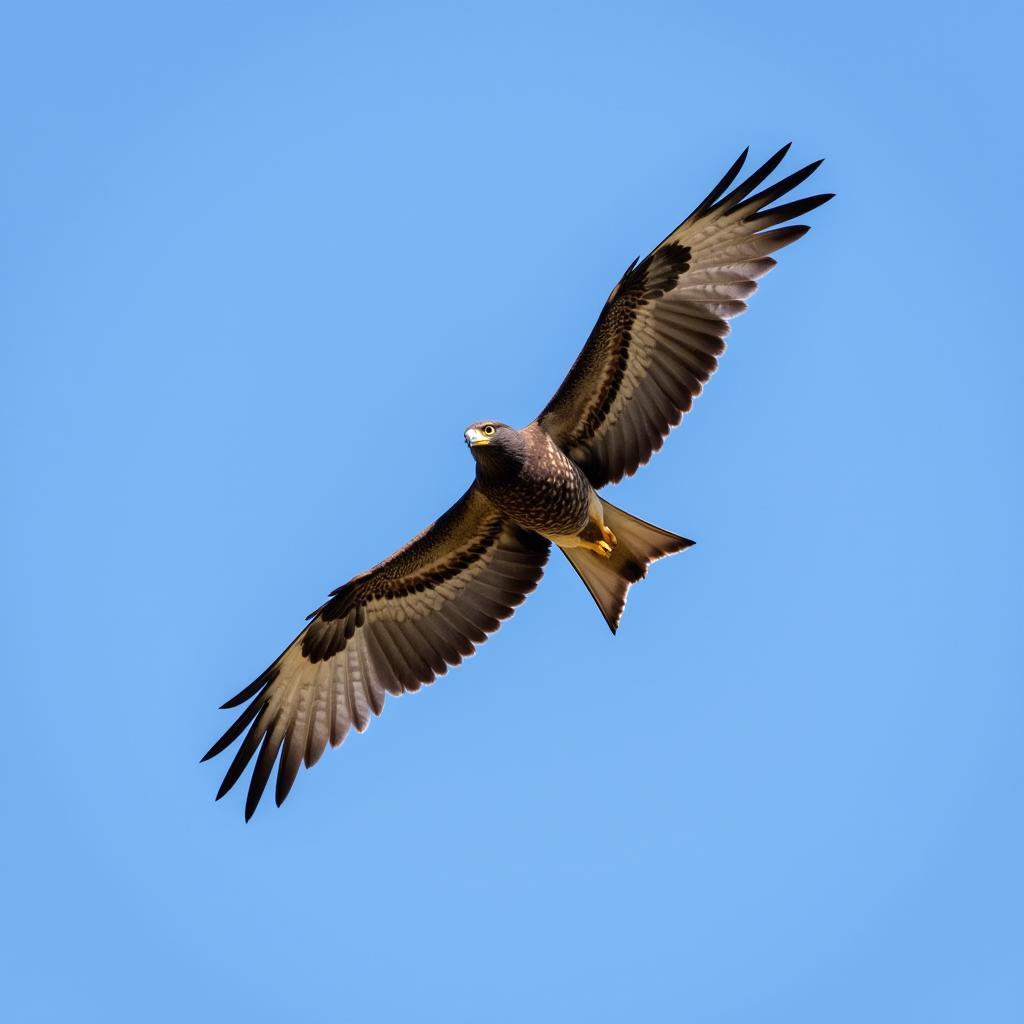The African Goshawk: A Powerful Raptor of the African Skies
The African Goshawk, scientifically known as Accipiter tachiro, is a frequent sight soaring across the African sky. This magnificent bird of prey, with its striking plumage and fierce gaze, embodies the untamed spirit of the African wilderness.
 African goshawk soaring through the sky
African goshawk soaring through the sky
Mastering the Aerial Hunt: Adaptations of the African Goshawk
The African goshawk is a highly skilled predator, perfectly adapted to its role as an apex hunter. Its size, strength, and agility allow it to navigate dense forests and open savannas with ease, making it a formidable force in its ecosystem.
- Size and Build: African goshawks are medium-sized raptors, with females noticeably larger than males. This size difference, known as sexual dimorphism, is common in birds of prey.
- Powerful Wings: Their short, rounded wings and long tails provide exceptional maneuverability, allowing them to twist and turn through the air with incredible precision as they chase prey through dense vegetation.
- Sharp Talons and Beak: Like other raptors, the African goshawk possesses razor-sharp talons for catching and gripping prey and a powerful, hooked beak for tearing flesh.
A Diverse Palate: The Diet of the African Goshawk
The African goshawk is an opportunistic feeder with a varied diet that reflects the diversity of its habitat. They are primarily bird eaters, their prey list reading like a who’s who of the avian world.
- Birds: From small songbirds to doves and pigeons, the African goshawk’s diet includes a wide variety of birds. They are even known to take down birds larger than themselves, showcasing their hunting prowess.
- Mammals: While birds form the bulk of their diet, African goshawks will also hunt small mammals like rodents, squirrels, and bats.
- Reptiles and Insects: Occasionally, they supplement their diet with reptiles, such as lizards and snakes, and even large insects.
This adaptability in their feeding habits ensures their survival in a variety of habitats across Africa.
A Symphony of Sounds: The Calls of the African Goshawk
The African savanna and woodlands come alive with the calls of the African goshawk, particularly during the breeding season. Their vocalizations are a key part of their communication strategy.
- Alarm Calls: When threatened, the African goshawk emits a series of sharp, piercing alarm calls to warn off intruders and protect their nests.
- Courtship Displays: During courtship, pairs engage in aerial displays, their calls echoing through the air as they soar and dive in a graceful dance of courtship.
The African Goshawk’s Place in African Culture
The African goshawk, with its powerful presence, has not gone unnoticed by the people who share its land. In many African cultures, raptors like the goshawk hold a significant place in folklore, beliefs, and traditions.
- Symbols of Power and Strength: Their hunting prowess often leads to their association with strength, agility, and vigilance.
- Spiritual Significance: In some cultures, the African goshawk is believed to be a messenger of the spirits or a representation of ancestral guidance.
Conservation Status: Protecting the African Skies
The African goshawk, while still relatively common, faces threats from habitat loss, hunting, and the illegal pet trade.
- Habitat Loss: As human populations expand and natural habitats are converted for agriculture and development, the African goshawk’s hunting grounds are shrinking.
- Persecution: In some areas, they are persecuted as pests due to their occasional predation on poultry.
However, conservation efforts are underway to protect these magnificent birds and ensure their continued presence in the African skies.
Conclusion: The Enduring Spirit of the African Goshawk
The African goshawk, a raptor of grace and power, is a testament to the wild beauty of Africa. Their adaptability, hunting skills, and cultural significance make them an integral part of the African landscape. As we strive to protect the continent’s biodiversity, it is crucial to recognize the importance of preserving the habitat and the future of these majestic birds of prey.




